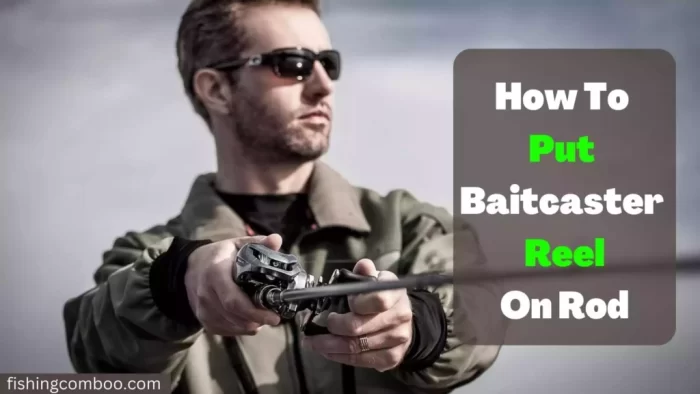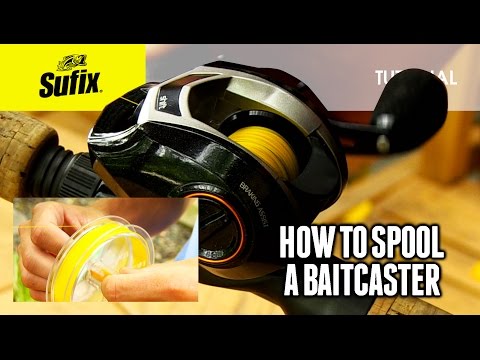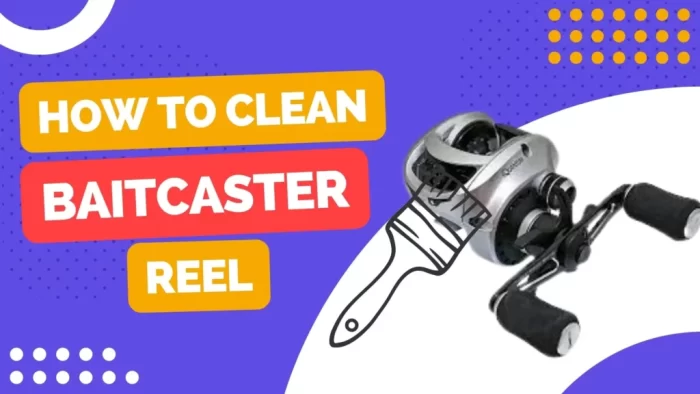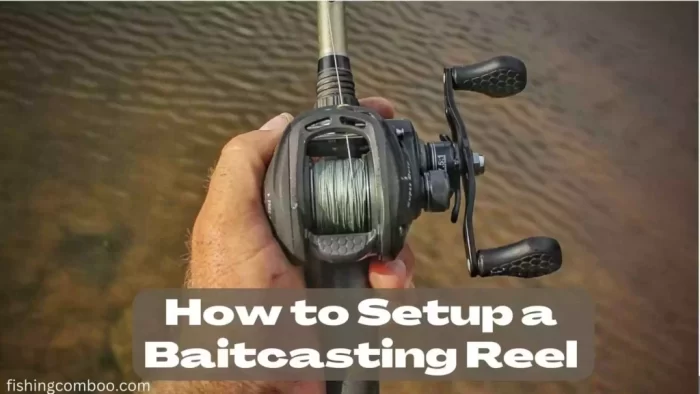
Fishing anglers know that a baitcaster reel is an essential piece of gear for getting the best results on the water. However, attaching it to a rod tends to intimidate many people.
Whether you’re just getting into fishing or you’re looking for a way to step your game up, using a baitcaster reel is a great option. However, before you can start using one, you need to know how to put a baitcaster reel on a rod.
Fortunately, it isn’t as difficult as it seems. In fact, once you know a few simple steps, you’ll be able to put a baitcaster reel on a rod like a pro angler.
You’ll be fishing in no time if you follow the instructions below!
Overview of Baitcasting Reel

Baitcasting reels are fishing reels designed for use with baitcasting rods. They’re also known as casting reels or spin-cast reels. Baitcasting reels are designed to be mounted on the top of the rod rather than on the bottom like most other types of fishing reels.
These are generally used for larger fish, as they have a higher line capacity and can handle more weight than other types of fishing reels. They’re also more expensive than other fishing reels because of their increased durability.
If you’re looking for a fishing reel that can handle larger fish and heavier weights, then a baitcasting reel is the way to go. Instructions on how to attach a baitcaster reel to a rod are provided below.
table of contents
HOW TO PUT A BAITCASTING REEL ON A ROD STEP-BY-STEP
STEP – 1: CHOOSE THE APPROPRIATE BAITCASTING ROD

The initial step is selecting the proper baitcasting rod. Baitcasting rods can be selected based on several factors, including what kind of fish you will be catching, how heavy the fish will be, and what kind of water you will be fishing in.
A baitcasting rod capable of handling heavier weights will be necessary if you want to target larger fish. Similarly, if you’re fishing in saltwater, you’ll need a baitcasting rod that’s designed for saltwater fishing.
Checkout this Overall Best Baitcasting Rod
STEP – 2: CHOOSE THE RIGHT BAITCASTING REEL
Choosing a baitcasting reel requires consideration of various factors, such as the type of fishing you plan to do, the size of fish you plan to target, and your budget.
If you’re just starting with baitcasting, choosing a reel that’s affordable and easy to use is a good idea. Depending on your experience, you can upgrade your reel to one with more features at a higher price.
Learn: How to Set Up a Baitcasting Reel
You should take your fishing style into account when selecting a reel. For small fish, you can use a less expensive and smaller reel. But if you’re going for big fish, you will need a larger and more powerful reel.
Finally, consider your budget when choosing a baitcasting reel. There’re numerous excellent choices at various price ranges. Spend some time looking for a reel that fits your needs and your budget.
Please note that the right-handed or left-handed reel should be considered before purchasing.
Checkout this Overall Best Baitcasting Reel
STEP – 3: MATCH THE REEL WITH THE ROD
It’s time to match up your baitcasting rod and reel once you’ve chosen the right one. This requires knowing the size of the reel and rod.
The size of your reel will be listed on the side of the reel. You can either find it in millimeters or in inches. The size of your rod will also be listed on the side of the rod, but it will be listed in feet or meters. To match the reel with the rod, you’ll need to convert the size of the reel from inches or millimeters to feet or meters. Once you’ve done that, you can match the reel’s size with the rod’s size.
For example, if your reel is listed as being 3 inches (76mm) in size, you would need to convert that to feet or meters. To do that, you would divide 3 inches by 12 inches, which equals 0.25 feet.
Similarly, if your reel is listed as being 1000 mm in size, you would need to convert that to feet or meters. To do that, you would divide 1000mm by 1000mm, which equals 1 meter.
You can match up your reel and rod now that you know their sizes. For example, if you have a 3-inch reel, you would need to find a baitcasting rod that’s at least 0.25 feet in length.
STEP – 4: ASSEMBLE THE ROD AND REEL
Now that you have the perfect match of baitcasting reel and rod, it’s time to assemble them. First, you’ll need to attach the reel to the rod.
On the rod, locate the reel seat. The reel seat is the section of the rod to which the reel is attached. Most of the time, it’s near the rod’s handle.
Once you’ve found the reel seat, insert the spool of the reel into the reel seat. Then, screw the reel onto the reel seat until it’s snug.
Tie the end of your fishing line to the arbor of the reel. The arbor is the part of the reel where the line wraps around. A basic knot, such as a clinch knot or an improved clinch knot, should be used to affix the line to the arbor.
Once the line is tied to the arbor, pull out about 10 feet (3 meters) of line and cut off the excess. Now, your rod and reel are assembled and ready to use.
Extra Info to Attach a Baitcaster Reel with Rod
- Start by threading your line through the eyelets on your rod. You must pass a braided line through the first two eyelets if you’re using them.
- Once your line is in place, take the baitcaster reel and align it with the rod. Before attaching the reel, make sure it’s facing the right way.
- Next, use one hand to hold the reel in place and use your other hand to screw the bail onto the rod.
- Once the bail is in place, you can start winding your line onto the reel. Start by holding the line in your non-dominant hand and wrapping it around the spool in a clockwise direction.
- Continue winding the line until it’s tight against the spool. You don’t want there to be any slack in the line, as this can cause problems when you’re casting.
- Once your line is wound tightly, you can close the bail and start fishing!
That concludes the matter! Now that you know how to put a baitcaster reel on a rod.
Read Our Reviews About: Best Baitcaster Combos
TIPS FOR USING A BAITCASTING REEL
- Get to know your baitcasting reel before you use it. Read the reel’s instructions and familiarize yourself with its components.
- Use a heavier line than you would with a spinning reel. Baitcasting reels are designed for heavier lines and can handle the weight better.
- Fill the spool of your baitcasting reel to the top. This will help prevent line breakage and tangles.
- Use a leader when fishing with baitcasting reels. A line segment that is joined to the main line is referred to as a leader. It helps prevent the fish from biting through the main line.
- Be careful when throwing with a baitcasting reel. The line may tangle if it is removed from the spool too quickly. Practice in an open area before using the reel in fishing conditions.
- Inspect your baitcasting reel after each use. According to the manufacturer’s guidelines, remove any dirt or debris from the reel and lubricate it. This will help maintain the reel’s functionality.
Conclusion
So, now that you know how to put a baitcaster reel on a rod, are you ready to try it? Baitcasting reels can be a great asset to any fisherman’s toolkit. They are versatile and can be used in different fishing situations. I hope this guide has been helpful and that you’ll give baitcasting a try the next time you go fishing. All the best!
How would you advise someone getting started with a baitcaster reel? Share them in the comments below!





